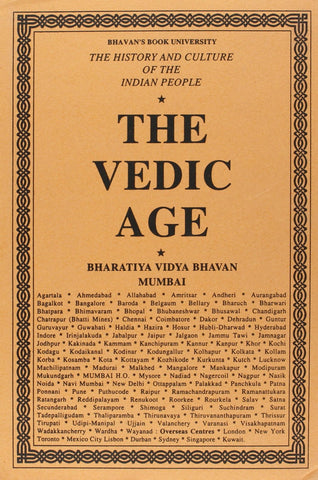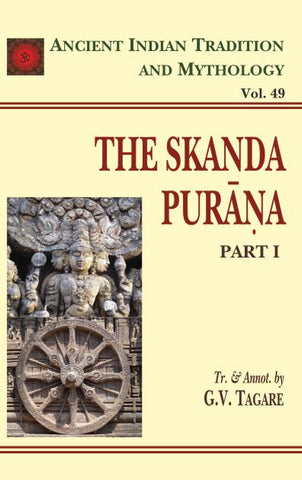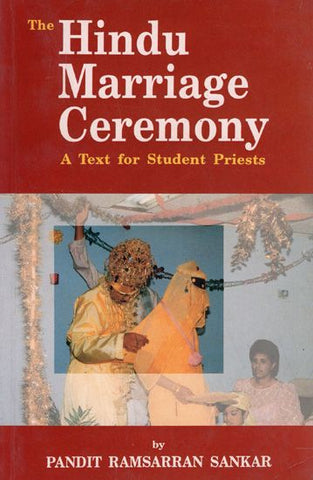Your cart is empty now.
The History of Dharmashastra with the subtitle Ancient and Medieval Religious and Civil Law in India is a monumental five-volume work consisting of around 6,500 pages. It was written by Bharat Ratna Pandurang Vaman Kane, an Indologist. The first volume of the work was published in 1930 and the last one in 1962.
It is a happy coincidence, that this reprint of Vol. I of the revised edition of Professor P.V. Kane’s History of Dharmasastra is being published at a time when the Kanes are celebrating a huge family gathering in Pune. The Bhandarkar Oriental Research Institute takes this opportunity to reverentially and gratefully remember the crudite author of this magnum opus, whose close association with the Institute has ever been a source of great pride and honour to it.
On November 17, 1962, the publication of the fifth and last Volume of Professor P. V. KANE’S History of Dharmasastra was formally announced by the then President of India Dr. S. RADHAKRISHNAN, and a significant landmark in the history of Indological research in this country may be said to have been thereby established. The History of Dharmasastra is a literary work which is truly magnificent both in conception and execution. Its five Volumes, which together extend over nearly 6,500 pages, seek to present the most comprehensive treatment of the religious and civil law of ancient and medieval India. And, Professor KANE has accomplished this gigantic task single-handed- incidentally, he has written down every word of History in his own hand — and that too while he had been occupied with various other literary and public activities. As the late Dr. R. N. DANDEKAR once said, Tor Professor KANE, the History of Dharmasastra is the crowning glory of a life of great fulfilment, and, for the Bhandarkar Oriental Research Institute, it is a matter of signal pride and honour to have been closely associated with that work”.
The first Volume of the History of Dharmasastra was published in 1930 and the second edition of the first Volume in the year 1990.
Now it is a dire need to publish the third edition of the text. Already Professor KANE himself revised and enlarged the first edition of Volume I at a time when then Hon. Secy. Prof. R. N. DANDEKAR proposed to publish and published the second edition of Volume I. This third edition is a mere reprint of the second one. I am sure that the readers who were longing for this reprint will happily welcome it.
The completion of the second revised and enlarged edition of Volume I of the History of Dharmasastra marked by the publication of this second part, gives us solace and a feeling of redemption.
Soon after the release of the fifth and final Volume of the History of Dharmasastra in November 1962, Professor KANE began working on the revised edition of Volume I. Of course, it was not then visualised that the revision would ultimately result in the Volume becoming almost double its original size. But Kane was not a man to be satisfied with anything less than thorough and exhaustive. As his work of revision was progressing and growing in size, we thought that it would be advisable if the Volume was issued in two parts. The first part was, accordingly, published in May 1968 on the occasion of the Golden Jubilee of the Institute. It was then hoped that the second part also would be published in the course of the next couple of years.
But unfortunately, that was not to be. What with the increasing difficulties of printing and with the sudden collapse in Kane’s usually sound health, the publication of this second part had to wait- sadly enough - till the third death anniversary of the author. It is to be particularly regretted that this part had to pass through the press without Kane’s imprimatur.
We would like to reiterate, in all humility, that the Institute prides itself upon the kind of reflected glory that it enjoys on account of its close association with the History of Dharma, ristra which has made a veritable history in the field of Indological studies and research.
It is a little over ten years since the first volume of my History of Dharmasastra was published. In the preface to that volume, I expressed the hope that time and health permitting I might issue in a few years the second volume dealing with the development of the various subjects comprised in Dharmasastra. For several years thereafter whatever leisure I could secure from professional work was devoted to the collection and orderly assortment of the vast Literature on Dharmasastra. After my return from a few months’ visit to Europe in 1937, I commenced the work of writing the second volume. It soon became apparent to me that to compress within the limits of a single volume the development of the thousand and one topics that fall within the purview of Dharmasastra would present only a scrappy and faint outline of the whole field. To add to the difficulties of my task my old painful complaint (duodenal ulcer) recurred with far greater virulence than before, so much so that, partly on medical advice and partly out of despair, in October 1938 I gave up the work altogether. When relief did not come even after six months’ total abstinence from literary labours I resumed, in spite of my extremely painful complaint, the work of writing, for fear that otherwise the extensive materials that I had been collecting for nearly two decades might be entirely lost to the world of Sanskrit scholars and that my labours might be altogether wasted. Being afraid that my strength and resolution may not last till the completion of the rather ambitious undertaking, I decided upon bringing out in two volumes the development of the various subjects comprised in Dharmasastra.
The present volume contains the treatment of varna and asrama, the samskaras, ahnika and acara, dana, pratistha and utsarga, and srauta (Vedic) sacrifices. The next volume (the last will deal with the following topics: vyavahara (Law and procedure ), asauca (impurity on birth and death), sraddha, prayascitta, tirtha, vrata, kala, santi, the influence of the Purva-mimamsa and other sastras on Dharmasastra, customs and usages modifying Dharmasastra, the philosophical background of Dharmasastra, and future developments in Dharmasastra. Looking at my past performance I am unwilling to make any promise about the time when the next volume may be expected to be published. I may state, however, that in view of the fact that at present I am in much better health than I have been for several years, I shall try to publish it in three years more.
Excellent works dealing with distinct topics of Dharmasastra have been given to the world by eminent scholars. But so far as I know no writer has yet attempted single-handedly to survey the whole field oi`Dharma?1stra. From that point of view, this volume partakes of the nature of a pioneer undertaking. It is therefore to be expected that such an ambitious project will manifest the defects of all pioneer work. The circumstances (adverted to above) in which this work had to be written and the great hurry with which it had to be rushed through are other factors that are responsible for the awkward or obscure expressions and the errors that it may contain. I mention these matters for lessening the surprise that such blemishes might lead my friends to feel and not for blunting the edge of adverse criticism. The critic is certainly entitled to mercilessly criticize the work for its shortcomings and mistakes. Some readers may complain that the present work is prolix, while others may say that the space devoted to several topics is meagre. I have tried to pursue a middle course.
There was great temptation throughout this work to compare ancient and medieval Indian customs, usages and beliefs as disclosed by Dharmasastra's works with those of other peoples and countries. But I have tried to omit, as far as possible, such comparisons. Whenever I indulge in them I do so for several reasons. It is the fashion among many writers, both European and Indian, to hold the caste system and the dharma-sastra view of life responsible for most of the evils from which India suffers at present. To a very large extent, I do not subscribe to that view. I have endeavoured to show that human nature is the same in essentials throughout the world, the same tendencies and evils manifest themselves in all countries, the same abuses prevail and the same perversions of originally beneficent institutions take place everywhere and anywhere, whether particular countries or societies are within the grip of the caste system or any other casteless system. Undoubtedly the caste system has in fact produced certain evils, but it is not singular in this respect. No system is perfect and immune from evil effects. Though I have been brought up in the midst of the Brahmanical system, I hope it will be conceded by scholars that I have shown both sides of the picture and that I have endeavoured to write with detachment.
A few words must be said about the extensive quotations from Sanskrit works and the references to modern Indian Legislation and case—law. For those who cannot read English (most pandits and sastris do not), the quotations will be of great help in understanding at least the trend of the arguments. Besides Indian scholars are as a class poor and cannot afford to purchase numerous books. Nor are there many good libraries in India where all works of reference can be had. For all these reasons thousands of quotations have been cited in the footnotes. The quotations are mostly drawn from published works and references to mss. are few end far between. I hope that the numerous quotations will not intrude on the attention of those who want to read only the English portion of the work. Legislative enactments and; case-law have been referred to for showing that many regulations of dharmasastra are still very much alive, that they govern the every—day life of Hindus and permeate all classes of Hindu society in spite of the fact that a considerable part of dharmasastra has become obsolete. Similar remarks apply to the numerous references to inscriptions on stone and copper. These latter serve to prove that rules laid down in the dharmasastra were throughout two thousand years observed by the people and enforced by kings and that such rules were not mere precepts composed by dreamers of scholastic pedants.
I acknowledge with great pleasure that I am under deep obligations to many predecessors and workers in the same and other fields and to many friends. Among the works to which I had to refer constantly and from which I derived the greatest benefit I must especially refer to the following: Bloomfield’s Vedic Concordance, the Vedic Index of Professors Macdonell and Keith, the Sacred Books of the East edited by Max Muller (vols. II, VII, XII, XIV, XXV, XXVI, XXIX, XXX, XXXIII, XLI, XLIII, XLIV ). As I was handicapped by the fact that I know little German and less French, I could not fully utilise all the work done by modern European scholars. I am highly obliged to Paramahamsa Kevalananda Svami of Wai for constant help and guidance (particularly in the srauta portion); to Chintaman- sastri Datar of Poona for assistance in the chapter on darsa- purnamasa and to carefully going through the other chapters on srauta; to Mr. Keshav Lakshman Ogale for his work on a portion of the Index; to Tarkatirtha Raghunathasastri Kokje for reading through the whole work and suggesting additions and emendations.
Besides, assistance in various ways during the progress of the work for over three years was very kindly rendered by a host of friends, among whom I should like to make special mention Prof. H.D. Velankar, Prof. Rangaswami Ayyangar, Prof. P.P.S. Sastri, Dr. Alsdorf, Mr. N.C. Bapat, Pandit Rangacharya Raddi, Mr. L.S. Dravid (a Samavedi of Poona), Pandit S.D. Satavlekar, Mr. P.K. Gode. Thanks are due to all these and other friends for their help and interest in this volume. I must state, however, that I alone am responsible for the views and mistakes contained in this work.
In a work containing thousands of quotations and references, it is very likely that many slips have occurred. Besides it is very much to be regretted that several misprints have crept into the footnotes by the loss or displacement of dots and other loose parts of Sanskrit letters in the process of printing.
The second volume of the History of Dharmasastra was published in the third quarter of 1941. In the Preface to that volume, I held forth hopes that the next volume dealing with the remaining subjects comprised in Dharmasastra might be placed before scholars in about three years thereafter. The Great War was then being fought in Europe and it was generally believed that India would remain free from the fear of actual invasion. But such fond hopes were shattered by the sudden attack on Pearl Harbour by Japanese bombers on 7th December 1941. Japan gained rapid and phenomenal victories and within about three months of the attack on Pearl Harbour vast territories from the Philippines to Burma fell into the hands of the victors. Calcutta and Trincomalee were bombed. Serious fears were entertained about an invasion of the mainland of India by land, sea and air. There was great panic in such coastal cities as Madras, Bombay and Karachi. The matters uppermost in the minds of Government officials and the members of the public were A. R. P. measures, the recruiting of men for the army, navy and air force and the removal of families and valuables to places of safety in the interior. Important and rare books from the libraries of the Bombay Asiatic Society and of the University of Bombay were taken to distant places for reasons of security. During almost the whole of 1942, it was very difficult for me to work on the preparation of the third volume in the midst of a general atmosphere of panic caused by the fear of invasion and the removal of valuable reference books from Bombay. Owing to the war there has been a great scarcity of paper and printing also has become very costly.
I decided upon writing only on a few of the several subjects that remained to be dealt with and chose Rajadharma, Vyavahara and Sadacara: the treatment of which is now placed before the public. The scarcity of paper and labour is responsible for the fact that this third volume has been in the press for nearly three years, the present volume increased in bulk beyond expectation. The fourth and last volume will deal with the following subjects: Pataka, karmavipaka and prayascitta; antyesti, asauca and sraddha; tirtha; vrata; kala and muhurta; Santi; Paurana dharma; the influence of the Purvamimamsa and other sastras on dharma- sastra; the religious and philosophical background of dharma- sastra; the essentials of our culture, its future, the coming social and other trends and their impact on the dogmas and ideals of Dharmasastra. I am personally anxious to finish all the remaining work as early as possible. But looking at my age (I am nearly 67 now), my ailments and the number of subjects that remain to be dealt with, it is impossible for me to say when the next and last volume may be published. This', the volume also is full of quotations and refers to many inscriptions, judicial decisions and legislative enactments. The reasons for ‘this have been stated at length in the Preface to the second’ volume and I do not desire to repeat them here. In the general index to the second volume, full references to works like the Manusmrti were not given, because such works were quoted on almost every page. But some critics found fault with this; therefore in the index to this volume, full references to all works are inserted.
All that now remains is the pleasant duty of acknowledging my obligations to others. Bloomf1eld’s Vedic Concordance, the Vedic Index of Professors Macdonell and Keith and several volumes of the Sacred Books of the East have been very useful in preparing this volume as in the case of the preceding one. I wish to mention specially the debt I owe to the late Maha- mahopadhyaya Kamalakrsna Smrtitirtha for his editorial work on twelve volumes on the different branches of dharmasastra, which have been of great use to me in writing all the volumes of my History viz. Haralata, Vivadaratnakara, Grhastharatnakara, Krtyaratnakara, Tirthacintamani, Varsakriyakaumudi, Danakriyakaumudl, Sraddhakriyakaumudl, Suddhikaumudl, Dandaviveka, Rajadharmakaustubha and Agastyasamhita. I am highly obliged to Paramahamsa Svami Kevalananda Sarasvati of Wai for frequent help and guidance in solving some intricate problems of Dharmasastra, to Prof. N. A. Gore, M. A. of Poona for help in the careful correction of proofs, to Tarkatirtha Raghunathasastri Kokje of Lonavla and Mr. N. G. Chapekar, B.A., LL.B (retired F. C. Sub—judge), of Badlapur for reading through the whole volume and suggesting some additions and corrections.
Assistance in various ways during the progress of the work for the last four years was very kindly rendered by a host of friends and acquaintances, among whom I should like to make special mention of Prof. H. D. Velankar, Dr. R. N. Dandekar, Dr. S. K. Belvalkar, Rao Bahadur Prof. Rangaswami Aiyangar, l)r. A. S. Altekar, Mr. P. K. Gode, Dr. Raghavan, Mr. S. N. Joshi of Bharata—itihasa-samsodhaka-mandala at Poona, Mr. Bhabatosh Bhattacharya (son of M. M. Kamalakrsna Smrtitirtha ), Mr. S. L. Katre of Ujjain, Prof. A, M. Paramasivanandan of Pacchaiappa College at Madras, the late Pandit Rangacarya Raddi. Thanks are due to all these and many others for help and interest in this volume. It need not be expressly stated that I alone am responsible for the views and mistakes contained in this volume. I sincerely thank the Manager of the Aryabhushan Press, Poona, for carrying out the work of printing with care and promptitude in spite of difficulties caused by war conditions and paper and labour shortage.
In a work bristling with thousands of quotations and references, it is likely that many slips have escaped attention. The indulgence of the reader is sought for forgiveness in the neuter of several misprints in the footnotes caused by loss or displacement of the parts of letters in the process of printing.
The third volume of the History of Dharmasastra was, published in October l946. In the brief preface to that volume, I intimated that the remaining topics of Dharmasastra would be dealt with in one volume. But as l proceeded with the task I found that that was a miscalculation. To present in one volume all the topics that remained in the manner and on the scale that I had adopted in the first three volumes was found to be impossible. Besides, as my age advanced, I could not maintain the same speed and finish the whole history in a few years as I intimated I would in doing the preface to the third volume. Therefore, I had to decide, however reluctantly, to spread the remaining work over two volumes. Owing to the scarcity of paper and paucity of skilled workers, this volume has been in the press for more than three years. This volume deals with eight topics, viz. Pataka, Prayascitta., Karmavipaka, Antyesti, Esauca, Suddhi, Sraddha and Tirthayatra. These subjects are of great interest to anthropologists. There was a great temptation for me, when dealing with these topics, to indulge in dwelling upon similar beliefs, usages and rites described in such works as Frazer‘s *Golden Bough} For two reasons, however, I have rarely succumbed to this temptation. In the first place, there was the fear of increasing the bulk of the work which has already assumed enormous proportions.
In the second place, dwelling on comparisons of ancient and medieval Indian usages and rites with similar usages and rites found elsewhere is liable to serious misunderstanding. Frazer’s volumes are largely made up of materials concerning the beliefs, usages and rites of very primitive people. It appeared to me that readers of such comparisons might be led to think that people in ancient and medieval India were at a primitive stage of culture, while as a matter of fact, they had a very high culture in most matters, although they retained certain beliefs and usages derived from remote antiquity. Many cultured societies retain some usages that belong to periods of antiquity. The queen in France was to leave for a whole year the room in which the death of her consort was announced to her Wretched old women deemed to be witches was prosecuted and sentenced to death in England up to the beginning of the eighteenth century, while Manu (IX. 290) more than two thousand years ago prescribed the mild punishment of a fine of two hundred panas for all incantations intended to destroy life, for magic rites and for raising ghosts and goblins. My l main aim has throughout been to discover, collect, classify and interpret the {acts of the various departments of Dharmasastra and my endeavour has been, as far as in me lies, to present the truth with detachment and intellectual integrity and without bias (except what might have been unconsciously engendered in my mind owing to my being born and brought up in a brahmana family) to show the continuity, the developments and transformations in Indian beliefs, rites and usages throughout the ages and, while bringing the past in its causal relations with the present, to indicate and suggest future trends and changes in these matters.
The fifth and last volume will mainly deal with the following subjects; vratas and utsavas: Santi rites; kala and muhurta; purana-dharma, the influence of the Purvamimamsa and other sastras on dharmasastra; the cosmological, religious and philosophical background of dharmasastra; the fundamental aspects of our culture through the ages; the impact of modern social and other ideas and trends on the dogmas and ideals of dharmasastra and the future of the latter. This by itself is rather an ambitious programme. Now that I am over seventy-three years of age and suffering from several ailments I have misgivings whether l would be able to write this last volume and publish it while all mental and physical faculties are sound. I am extremely anxious to write this last volume as early as possible and bring to a conclusion an undertaking to which I have devoted all my leisure for over thirty years regardless of monetary losses and bodily ailments. With that object in view, I have given up either entirely or very largely most of my other activities and engagements and have thereby offended many of my friends.
This volume also is full of quotations, references to inscriptions and judicial decisions. The reasons for this have been stated at length in the preface to the second volume and therefore they need not be repeated here. The list of additions to this volume is much larger than in the preceding volumes. I may be pardoned for frankly stating the reason. The first and second volumes of the History of Dharmasastra were published so far back as 1950 and 1941 respectively. No second edition of these has yet been called. It seems to me quite possible that during my lifetime no second edition of the volumes of the History, or at least of this volume, might appear. Therefore, 1 tried to incorporate by way of additions such in-formation as had escaped me while the work was being written in order to make it as completely possible.
I now discharge the pleasant duty of acknowledging my obligations to others. Bloomfield’s Vedic Concordance, the Vedic Index of Professors Macdonell and Keith, and the volumes of the Sacred Books of the East have been very useful in pre- paring this volume in the case at its predecessors. Parama-hamsa Swami Kevalananda Sarasvati of Wai has been a tower of strength in all matters of doubt and difficulty and has helped me by offering prompt guidance in solving some intricate problems. I am highly obliged to Mr. S. N. Savadi of the Bhandarkar Oriental Institute, Poona, for help in the correction of proofs and to Mr. P. M. Purandare, Advocate (O. S.), Bombay High Court, and Tarkatirtha Raghunath Shastri Kokje of Lonavla for reading the printed sheets as they came and making valuable suggestions.
It is difficult to name all those who in various ways, during the progress of this volume for over six years, kindly rendered assistance, but I should like to make special mention of Prof. H. V. Rangaswami Aiyangar, Mr. A. N. Krishna Aiyangar, Dr. A. S. Altekar, Dr. S. K. Belvalkar, Prof. G. H. Bhatt, Mr. Bhabatosh Bhattacharya, Mr. N. G. Chapekar, Dr. R. N. Dandekar, Mr. D. B. Diskalkar, Dr. G. Gai, Prof. P. K. Gode, Tarka-Tirtha Laksmanashastri Joshi, Mr. G. H. Khare, Pandit Balacharya Khuperkar, Dr, Umesha Mishra, Dr. V. Raghavan, Prof. L. Renou, Prot. H. D. Velankar. Thanks are due to these scholars and many others for their help and interest in this volume. I am conscious that in spite of so much help and generous encouragement from friends, there are in this volume several mistakes, the sole responsibility for which rests on my shoulders. In a work replete with thousands of quotations and references it is quite likely that many slips have escaped my attention. For these and for the elision of a few diacritical marks and the displacement of parts of Sanskrit letters in the process of printing the indulgence and forgiveness of all readers are seeking. I sincerely thank the Manager of the Aryabhushan Press Poona, for carrying out the work of printing this volume with care in spite of difficulties caused by paper and labour shortages.
The Bhandarkar Oriental Research Institute has great pleasure in publishing the first part of the fifth and last volume of Mahamahopadhyaya Dr. P. V. Kane’s monumental History of Dharmasastra. This part comprises two sections. The first section deals at length with important vratas and utsavas such as Krsnajanmastami, Durgotsava, Divali, Sankranti, Mahasivaratri, Holika, and also includes brief notices of about 1100 vratas, pujas and utsavas with references; the second section deals with Kala (Time ), and its philosophic conceptions from Vedic times downwards; Indian Astronomy and Astrology and the theories of Western scholars about them; nakshatras and astrology based on them; muhurtas and their employment in religious rites; the Zodiacal signs; planets and week-days; principles laid down in Indian astrological works; calendar, eras and intercalary month; Yuga, Manvantara and Kalpa; Yoga and Karana; and reform of our calendar.
The second part of this volume will treat such topics as santis-Vedic and post-Vedic; Puranas and their Influence on Dharmasastra, society and Buddhism; Tantras and Dharma- sastra; Purvamimamsa and other Darsanas in relation to Dharma- sastra; cosmology; the theory of punarjanma; the essential characteristics of our culture through the ages; and future trends. All prefatory matters, including a list of abbreviations, a brief synopsis of the contents, a list of works consulted, etc., as also a General Index for the whole volume, will be given in the second part, which we hope to publish before long.
It is with a sense of profound gratification that the Bhandarkar Oriental Research Institute presents to the public the re-print of the second part of the fifth and last volume of the History of Dharmasastra by the late MM. Professor Dr. P.V. Kane, National Professor of Indology. The six volumes of the text extend over nearly 6,500 pages and constitute an authoritative and encyclopedic treatment of the religious and civil law of ancient and medieval India. What is particularly remarkable is that Professor Kane accomplished this enormous work single-handed, and that too while being fully occupied with various other literary and public activities.
Professor Kane is now no more with us. Yet he lives eternally through these Precious Volumes.
Professor Pandurang Vaman Kane, by his monumental volumes on Dharmasastra, has placed us all in a deep debt of gratitude to him. His work is of lasting value. At a time when we are building an integrated Indian society, a dispassionate study of our Dharmasastras is essential. Through his work, we are helped to understand what is living and what is dead in the heritage which has come down to us.
Our heritage has always been changing with reference to new conditions and new pressures. The process of readaptation is now at work. In spite of many changes, the obstacles to Indian unity require to be removed. The principles which should guide us in the reorientation of our society are well brought out in Professor Kane’s volumes. They may be said to be religious and social.
True religion has three sides to it : ( I ) a state of mind; ( 2 ) a relationship to Reality; and ( 3 ) a way of life.
State of mind. Religious scriptures speak of the passionate quest for spiritual illumination. Religion is inner illumination, a renewal of spirit, an awakening, a changed condition of mind. This is the knowledge of God and not merely belief in Him. This is achieved by study, discipline, meditation and purity of heart.
Relationship to Reality. Nearness to God is the goal of religious aspirants. When they attain an in-sight into Reality, their words are full of rapturous delight. They make out that the Reality they encounter is ineffable, incapable of adequate expression.
It transcends the distinction of subject and object, the duality which is essential for knowledge.
The absolute of experience is not the absolute of language or logic. The Real to which we belong is beyond description in its majesty, power and glory. Spiritual humility requires us to look upon the varied expressions and interpretations as suggestions of the Supreme. By encouraging dogmatism and the use of force to spread belief, religions have become discredited.
The seers affirm that they are one with the Supreme: aham brahmasmi. Hallaj exclaims: " I am the truth” and was executed for his heterodoxy.
A. well-known Sufi tradition attributes to the prophet a saying: "He who knows the self knows the Lord”. Of Abu Yazid it is recorded that he said: “I sloughed off my self as a snake sloughs off its skin; then I looked into my self, and lo, I was He”. Religion, it is said, springs from the great ‘I am’ in each ‘me ’. The fountains are within.
On the pathway to the goal, we feel that the attainment of the goal is conditioned by the effort of the seeker and the grace of God — tapah-prabhava and deva-prasada.
The seekers look upon the Supreme as a Person separate from us, whose commands we obey, whose will we accept with reverence. The One beyond sense-perception, speech and logic is also the Controller, the Lord of all, the Creator and Ordainer of all. “There is nothing marvellous in my love for you, O God, you are a mighty being but your love for me a poor slave is really marvellous; It is impossible to know thee and not to love thee. "The personal is not a falsification of the real. It is a manifestation of the Supreme. In some of the Upanisads -Svetasvatara for example —as in the Bhagavadgita, the Supreme is a God of love and grace. Those who adopt the view of religion as experience, communion with God, are free from the tyranny of dogmas, from the fanaticism which is a disease of the mind to which men and communities are subject.
We are vulnerable to mass hysteria. This need not be so for human nature is infinitely malleable. If we feel that anything is true or beautiful, we are persuaded that it must find acceptance from others. We cannot but communicate to others what we know to be the truth. But when claims to absolute truth are varied and conflicting, humility requires us to respect the deepest convictions of others.
Way of Life. In some systems of thought a distinction is made between two orders of being, metaphysical and empirical. It does not mean that the latter is illusory. The distinction between the two is not absolute. The metaphysical reality is immanent in the world of becoming and makes for the gradual unfolding of values. This world is consecrated ground. Our sages set forth in clear and shining words the ideal of participation in the work of the world in order to raise its quality. Karmabhumim imam prapya kanavyam karma gat subham says Rama, according to Valmiki. Having come into this world of action one should perform good deeds. Valmiki continues that the great sages have attained heaven through the performance of good deeds. It does not matter whether you are a grhastha or householder, samnyasia or mendicant. Janaka was a householder, and sage Yajnavalkya was a wandering mendicant, parivrujaka. If we behave well, we will make the world a paradise; if we misbehave we will turn it into hell.
Vyavasayatmika buddhir eke’ ha kurunandana.
The trained understanding is single-minded. Integrity refers to the quality of oneness. It does not mean alienation from the world; Religion does not mean other-worldiness, separating oneself from all created things. It is a denial of egoism. Turning one’s back on the world is a part of ascetic discipline which is not an end in itself. Liberation from the tyranny of time is not liberation from time. When we become spiritual in outlook we do not cease to be human.
The secret of true greatness is the love of fellowmen. Love of neighbour is not only a moral duty but a wise policy. The right course today is cooperation and not conflict. “What merit is there in the goodness of a man who returns good for good? A good man verily is one who returns good for evil. “Ramarajya or the Kingdom of God is the ideal for the human community. The one hope for the peoples of the world to get together is a change in the human heart.
Ethical standards are the only criteria for the distinction between high and low among men. Purity of conduct elevates a man even as impurity degrades him. All other distinctions are irrelevant. The Chain- dogya Upanisad refers to patitas. The Candalas are those given to stealing, drinking, adultery and murder. These four are fallen: etc patanti catvarah.’ A patita, a fallen man, is a wicked man, a small-minded selfish man, not an untouchable.
The caste distinctions may have had their value in another context of society but we have out-grown it.
The Bhagavadgita speaks of the four-fold classification based on guna (character) and karma (work).
We are all unregenerate at birth and become regenerated by our effort.
janmana jayate sudrah
samskarad dvija ucyate
Some are advanced; others not. We should give equal facilities to all. The Mahabharata says that there was only one varna at the beginning and the four castes arose out of later developments.
ekavarnam idam purvam visvam asid yudhisthira |
karma-kriya-vibhedena caturvarnyam pratisthitam ||
But we have come to base caste on birth though some of our leading writers have held that it is not birth or learning but conduct alone that constitutes its basis; for dvijatva,
vrttam eva tu karanam |
vedapathena vipras tu brahmajnanat tu brahmanah ||
It is not the colour of the skin but the conduct of the person that counts. The only way to progress is by means of good conduct. The Samrarta-Smrti says:
sadacarena devatvam rsitvam vai tathaiva ca |
prapnuvanti kugonitvam manusyas tadviparyaye ||
Great achievement is possible for each one of us.
Professor Kane brings out with great learning and lucidity the frequent changes our society has passed through. When Manu (I. 85) tells us that different customs prevailed in different ages he suggests that the social code is not a fixed but a flexible one. Social customs and institutions are subject to change. Yajna-valkya tells us that “one should not practice that which, though ordained by the Smrti, is condemned by the people. What appeals to one’s conscience, atmanas tustih, the conscience of the disciplined, not of the superficial, the forms which the elect praise, should be our standard.
Vital changes may be introduced in the habits of the people by parisads or assemblies of the learned. When such assemblies cannot be constituted even the decision of one learned in dharma will be authoritative. The Apastamba Dharmasutra says: dharmajna-samayah pramanam. People who are learned and compassionate, who are practical-minded can decide the issues of right and wrong. They are the conscience of the community. What we are doing by legislative enactments is consistent with our tradition.
The fourth volume of the History of Dharmasastra was published in October 1953, i.e. more than eight years ago. This last volume was in the Press for more than five years. The delay is due to several causes this volume in two parts contains over 1700 pages. It is thus far more bulky than any of the previous volumes. The non-availability of a sufficient quantity of good printing gaper was another cause. The third cause was my age ~I am now 82 years old) and frequently had health. It is gratifying to my friends and myself that at last this undertaking spread over thirty-seven years is completed.
This volume is divided into ten sections. The first section deals with Vratas and Utsavas ( religious vows and festivals ); the second with Kala (time), Muhurta (auspicious times ), and calendar; the third with Santis (propitiatory rites for averting the wrath of a deity, a calamity or unlucky event); the fourth and fifth with Puranas and Dharmasastra and the causes of the disappearance of Buddhism from India; the sixth with Tantrik doctrines and Dharmasastra; the seventh with Mimamsa and Dharmasastra; the eighth with Sankhya, Yoga, Tarka and Dharmasastra; the ninth with cosmology, Karma and Punarjanma; the tenth with the fundamental conceptions and characteristics of Hindu ( Bharatiya ) culture and civilization, and future trends.
In the Preface to the 2nd volume, I have indicated the reasons for numerous and lengthy Sanskrit quotations. In the Preface to the 4th volume, I have mentioned the aim I had in view of bringing together the facts in each branch of Dharmasastra with detachment and integrity and without bias. The same aim and mental attitude have been kept in view in this volume also. But it may be argued that when an author selects some of. the numerous facts he passes a judgement about the importance of facts and his judgement may be biased all the same. I do not dispute this argument, but will only argue that facts being numerous and there being limitations imposed by the space available, the author has a right to pronounce a judgement as to the importance of the facts he selects.
As regards volumes two, three and four, I could rely on a tower of strength in the person of Parama-hamsa Svami Kevalananda Sarasvati of Wai. But, unfortunately, Svami passed away in March 1955 before I began to write this last volume, and I could not get the benefit of his wise counsel in this fifth volume.
In this last volume, I received help from many people, either personally or by correspondence. I have to thank Mr. M. B. Arte, Dr. R. N. Dandekar, and Prof. H. D. Velankar for their help in translating important passages from several French and German works. Prof. Gode, Curator of the Bhandarkar Oriental Research Institute, Poona, was always ready to render help to manuscripts and books. He had been a close friend for nearly forty years and his sudden death has meant for me the loss of a learned, sympathetic, and ever-obliging friend. Dr. A. D. Pusalker very carefully read the chapters on Puranas and indicated several misprints and some inaccurate statements. Dr. Raghavan very kindly brought to my notice the calendars in use in Southern India and certain works on Vratas; Pandit Srijiva Nyayatirtha sent me in Sanskrit the Naiyayika view on Kala; Miss Kunda Sathe ( now Mrs. Savkar) kindly sent me from Paris information from French scholars on Babylonian, Assyrian and Greek astronomy. I am highly obliged to Dr. B. S. Joshi for sending me microfilms of certain papers (not available in India) from Cambridge and Chicago. Prof Durgamohan Bhattacharya kindly sent me a copy of the Kala-siddhanta- darsini. I am under deep obligation to Svami Kuvalayananda of Lonavla for reading my chapter on Yoga and suggesting valuable changes and amendments. Prof. Zala gave me details about the Vratas observed in Saurastra. Prof. G. H. Bhatt (Baroda) and Mr. S. L. Katre (Curator, Scindia Institute, Ujjain ) very kindly showed me the manuscript wealth of their Institutes and helped me with the contents of several relevant, mss. on Vratas and Kala. Shri Padesastri of Baroda; discussed with me, personally and by correspondence, several points about Ancient Hindu Astronomy. MM. Dr. Umesh Mishra brought to my notice his edition of the Vijnanadipika of Padmapada and Dr. H. G. Narahari wrote to me about the Prarabdha-dhvanta-vidhvamsana of Acyutaraya and sent me off prints of me papers thereon. Mr. Shankarrao Joshi of the Bharata. ltihasa Samsodhaka Mandala of Poona helped? me by bringing to my notice hand-written calendars more than two hundred years old. To all these, I offer my best thanks. I am highly obliged to Mr. S. N Savadi B. A. (moss.) of the Bhandarkar Oriental Research Institute for help in the correction of the proofs of this volume. I have to thank Mr. P. M. Purandare, Advocate (O. S.), Bombay High Court, Tarkatirtha Raghunathasastri Kokje of Lonavla, and Dr. Bhabatosh Bhattacharya for reading the printed sheets and making suggestions and pointing out misprints. Mr N.G. Chapekar, in spite of his being now over 91 years of age, read some chapters when they were only typewritten, and discussed them personally with me for some hours. To him, I owe a deep debt of gratitude for having taken so much trouble at such a very advanced age. I am highly obliged to Dr. A. Ghosh, Director-General of the Archaeological Survey of India, and to the Liberation Mr L.G. Parab and the staff of the Archaeological Library for rendering all help to me while I had been collecting material for this volume.
I cannot find words adequate enough to express my sense of deep gratitude to Dr. Radhakrishnan, now President of India, who has favoured me with many kindnesses during the last fourteen years. As for this volume of the History of Dharmasastra, in the midst of numerous engagements and heavy work, he found time to look into its last two chapters, made vital suggestions for their improvement, and finally contributed a learned foreword.
I am aware that in spite of so much help rendered by so many friends and well-wishers, this large volume might contain many mistakes, for which I alone am responsible. In the process of printing, some diacritical marks have either been elided or placed in the wrong places, for which I seek the indulgence of all scholars and readers.
Lastly, I thank the Manager of the Aryabhushan Press of Poona for carrying out with energy and zeal the work of printing this very large volume bristling with thousands of quotations, in the face of great difficulties caused by a shortage of paper, the Poona floods and other unforeseen happenings.
| Volume I: Part II | ||
| Synopsis of Contents (Part I & II) | i-xliv | |
| Corrections and Additions | xlv | |
| History of Dharmasastra: (Sections 65-119 and a brief note on Dharmasastra writers from Kamarupa) | 585-984 | |
| Appendix A – List of Works on Dharmasastra | 985-1158 | |
| Appendix B – List of Authors on Dharmasastra | 1159-1242 | |
| General Index | 1243-1294 | |
| Volume II: Part I & II | ||
| List of Abbreviations | vii-x | |
| Chronological Table | xi-xii | |
| Synopsis | xiii-xxxiii | |
| List of Works Consulted | xxxiv-xlv | |
| Table of Cases Cited | xlvi-xlvii | |
| History of Dharmasastra | 1-1255 | |
| Appendix of Longer Extracts in Sanskrit | 1257-1278 | |
| General Index | 1279-1358 | |
| Index of Important Words | 1359-1366 | |
| Volume III | ||
| List of Abbreviations | xi-xvi | |
| Chronological Table | xvii-xx | |
| Brief Synopsis of the Contents | xxi-xxiii | |
| List of works consulted | xxv-xxxvi | |
| Table of cases cited | xxxvii-xlii | |
| Additions and Corrections | xliii-xliv | |
| History of Dharmasastra | 1-973 | |
| An appendix containing long passages in Sanskrit and a List of names of officials | 975-1014 | |
| General Index | 1015-1082 | |
| Index of technical or important works | 1083-1088 | |
| Volume IV | ||
| Preface | i-iv | |
| List of Abbreviations | v-viii | |
| Chronological Table | ix-xii | |
| Brief Synopsis of the Contents | xiii-xvi | |
| List of works consulted | xvii-xxvi | |
| Index of law cases | xxvii | |
| Additions and Corrections | xxviii-xxxii | |
| History of Dharmasastra, vol. IV | 1-827 | |
| An appendix containing long passages in Sanskrit | 828-833 | |
| General Index | 835-922 | |
| Index of technical or important Sanskrit words | 923-926 | |
| Volume V: Part II | ||
| Foreword | i-vi | |
| Preface | vii-x | |
| Chronological Table | xi-xvii | |
| Abbreviations | xviii-xxv | |
| A brief synopsis of the contents | xxvi-xxix | |
| References to pages of important works consulted | xxx-xxxi | |
| Corrections | xxxii-xxxiv | |
| History of Dharmasastra, Vol. V, Pt. 2 | 719-1711 | |
| Epilogue Acknowledgements and Thanks | i-xxxii | |
| Index | 1-269 |
Delivery and Shipping Policy
- INTERNATIONAL SHIPPING
- Rs.1000-1100/kg
- ESTD. Delivery Time: 2-3 weeks (depending on location)
- Bubble Wrapped with Extra Padding
- NATIONAL SHIPPING
- NCR: Rs. 30/half kg
- Standard: Rs. 80/half kg
- Express shipments also available on Request
- ESTD. Delivery Time: Ranging from 1-4 days up to 7 business days (Depending on your choice of Delivery)
- TRACKING
- All orders; national or international, will be provided with a Tracking ID to check the status of their respective orders
- Depending on the Shipping Service, Tracking ID may be used on their respective tracking portals
Frequently Asked Questions (FAQs)
Domestic Shipping: 3-4 Days (after shipping)
International Shipping: 1-2 weeks (based on your location)
You will receive an email once your order has been shipped or you can email us if you didn't receive tracking details (info@mlbd.co.in)
Every book that we sell is the latest edition except all the rare books
Yes, we do provide free shipping, only on domestic orders (within India) above Rs.1500

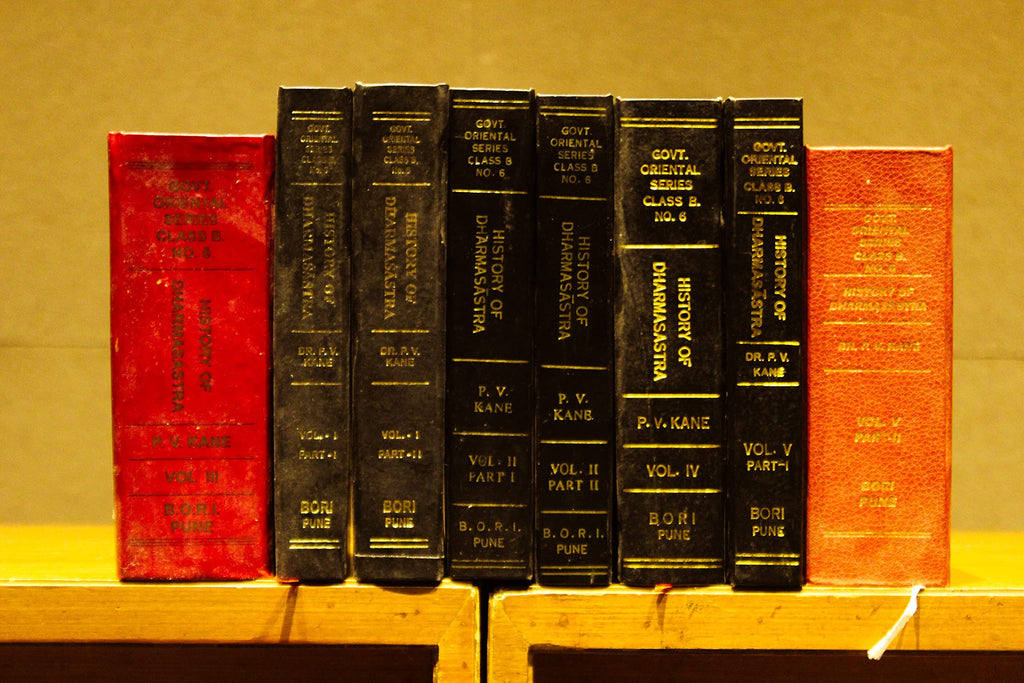
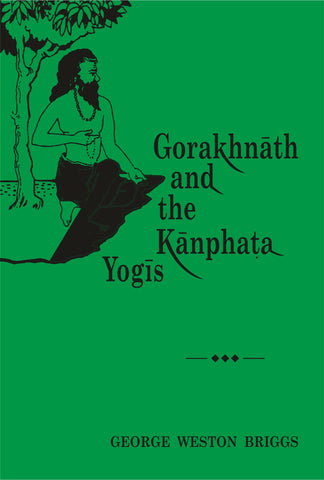
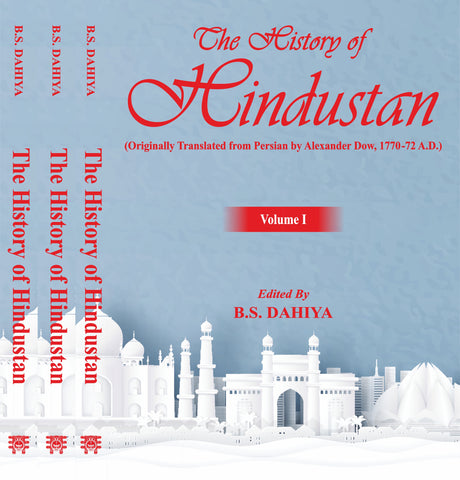
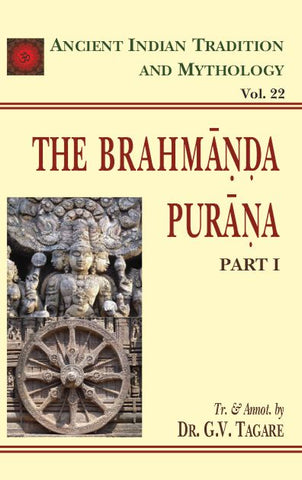
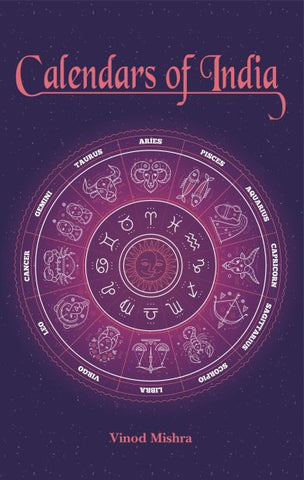
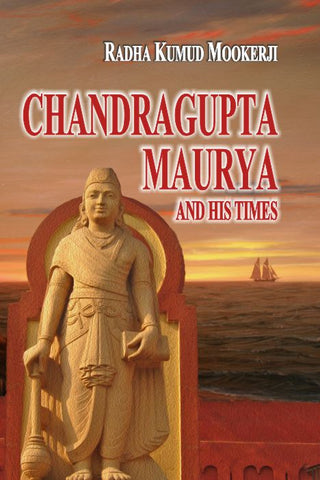
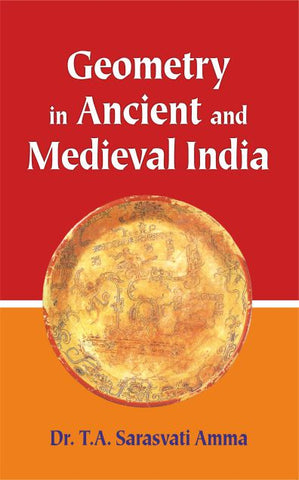
![A HISTORY OF INDIAN PHILOSOPHY [5 VOLUMES] by Surendranath Dasgupta](http://www.motilalbanarsidass.com/cdn/shop/products/HISTORYOFINDIANPHILOSOPHY_large.jpg?v=1675238163)
